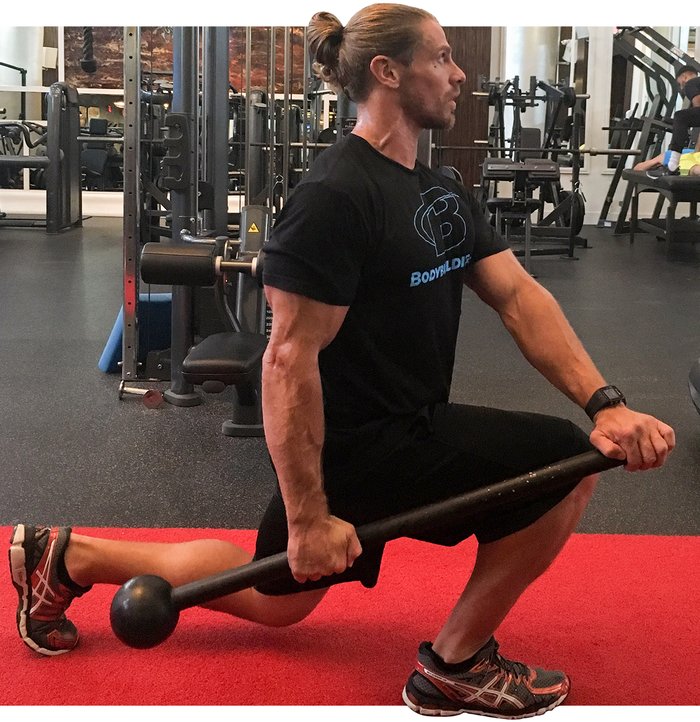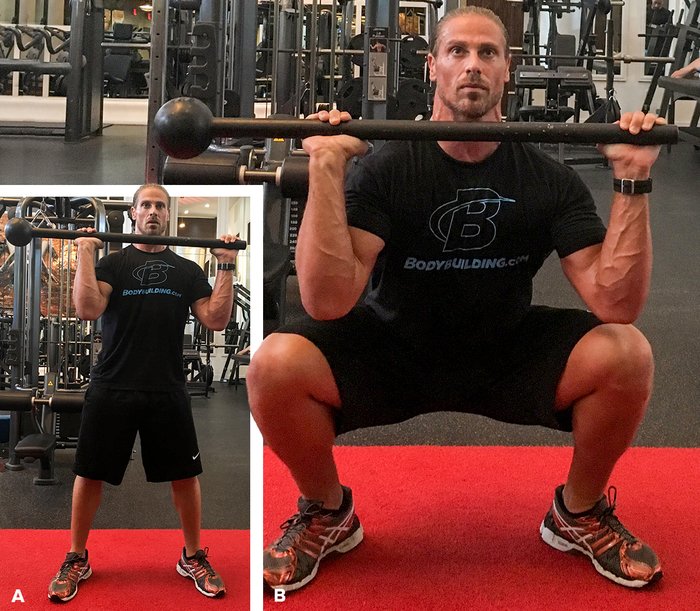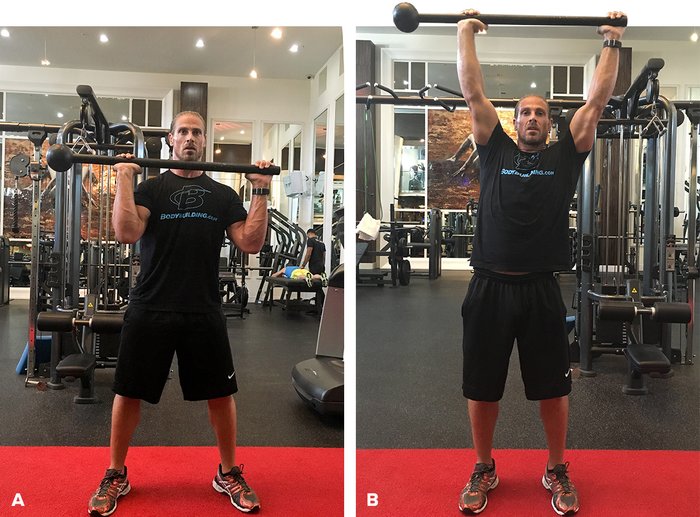 https://www.dragondoor.com/articles/pavel-said-i-might-be-crazy-a-kettlebell-swing-odyssey-that-helped-me-lose-100-pounds-of-fat-but-no-strength/
https://www.dragondoor.com/articles/pavel-said-i-might-be-crazy-a-kettlebell-swing-odyssey-that-helped-me-lose-100-pounds-of-fat-but-no-strength/Pavel сказал, что я crazy. Настолько ему понравились маховые рекорды, над которыми я работал более года.
Признаюсь, начиная отрабатывать махи, я и сам не ожидал таких достижений и немыслимых преобразований. Но сперва пара слов обо мне, чтобы вы тоже могли оценить масштаб.
(Бад написал о своем ошеломительном охудении целую книгу I Will Be Iron, в этой статье лишь базовая база (без научной науки))

Всю свою жизнь я был крупным. И не просто крупным, а именно толстым. В пять лет попал в автомобильную аварию и провел несколько месяцев в гипсовом скафандре, а потом заново учился ходить. И пока другие дети бегали и росли здоровыми, я набирал лишний жир, который остался со мной навсегда.
Но есть еще пара нюансов. Мои предки тоже были крупными - не толстыми, а мускулистыми - и подарили мне отличные гены для силового спорта. Но у этого наследия один существенный минус: я никак не мог похудеть. Попробую объяснить... если у вас лишний вес от сидячего образа жизни и переедания, то вы легко будете худеть, просто начав двигаться и следить за питанием. Но если вы уже много занимаетесь спортом И остаетесь толстым, то тут требуется что-то посерьезнее.
Я продолжал носить десятки лишних килограммов, будучи в отличной физической форме с прекрасной сердечно-сосудистой системой. Нескромно скажу, что одновременно очень силен И крайне вынослив. Я мог делать (и делал) тысячи отжиманий и приседаний без отягощений, в то же время поднимая огромные веса в разных видах силового спорта. Выступал в троеборье (больше 30 рекордов штатов, национальных и международных, чемпион мира в натуральном безэкипировочном пауэрлифтинге), в "Сильнейшем человеке планеты" (чемпион Флориды), "Горских игрищах" (чемпион Касселберри в группе "B", поднялся в группу "A"). Также соревновался в единоборствах: No-holds Barred fighting (1-1), Toughman (1-1), Highland Wrestling (чемпион Порт-Сент-Люси и Каллодена) + гиревой спорт (чемпион Флориды). И при всем при этом оставался толстым.

Так что у меня уже имелся некий тренировочный опыт, когда я начал этот эксперимент. Я многое узнал и испробовал, успешно тренировался для силы, массы и выносливости, но чувствовал, что еще что-то упускаю. Что-то, что поможет мне выйти на новый уровень.
Была и другая причина, почему я никак не худел. Меня просто не интересовала внешность, всегда думал только о том, что могу СДЕЛАТЬ. Привлекательная фигура абсолютно не привлекала, если при этом не было силовых или иных достижений. Есть куча людей намного стройнее меня, но при этом я НАМНОГО выносливее. И первые 16 лет тренировок я посвятил покорению 1000 фунтов (454 кг) в приседании - без стероидов и костюма.
Так что полезной массы тоже немножко набрал. Конечно, я и переедал - у нас, в южных штатах, слишком много вкусного и чересчур много талантливых поваров, калории просто летают в воздухе. Я мог садиться на диету и умел снижать вес, но это не тот способ, который я искал.
Начал новый путь я со смены установки: я поверил, что могу быть не просто выносливым, а сверхчеловечески выносливым (и оставаться при этом зверски сильным). И, не буду врать, питание тоже пересмотрел. Хотя я не злоупотреблял фастфудом, но вообще поесть любил (и до сих пор люблю). Однако приоритеты сменились, я стал думать - как мне повысить свой КПД, сделав тело максимально эффективным. И не просто заправлялся энергией, а уже подбирал полезное. С другой стороны, я не сторонник продолжительных лишений и не считаю какие-то продукты злом. Я ел любую пищу, которую хотел, с одним лишь условием - натуральную. Например, я не отказывался от хлеба, но ел не магазинный хлеб, а домашний, из настоящей цельнозерновой муки, и вообще лишь из четырех ингредиентов. Ладно, еду опишу в других статьях, приступим же к тренировкам.
Мах - базовое движение для увлекающихся гирями, с него всем нужно начинать. Однако я считаю его одним из лучших упражнений вообще. И хотя ничего не имею против рывка и толчка, все же, на мой взгляд, люди слишком рано прекращают махать, переключаясь на продвинутые подъемы. А я считаю, что махи сами по себе могут дать намного больше выносливости и силы, если посвятить им достаточно времени. И еще они - единственный способ сжечь жир для людей вроде меня, которые никак не худеют. Это не просто очередное упражнение в программе, а инструмент развития тела и духа, позволяющий улучшить спортивные результаты.
В основном я упражнялся три-четыре раза в неделю; одна или две тяжелые тренировки с большими весами, одна интервальная-ОФПшная и одна тренировка, посвященная только махам. Так как я параллельно работал над несколькими физическими качествами и полностью выкладывался в маховых тренировках, одного раза в неделю было достаточно. Иногда пара маховых, если силовые и интервальные получались короче. Я уже делал по 100-300 махов в составе других тренировок, поэтому на отдельной решил добраться до 500. Начал с 24-килограммой гири и задержался на ней, закладывая базу. Именно тогда я понял, как много может дать один лишь мах. Сперва я работал руками поочередно, меняя каждые 10 повторений; хотел дойти до предела мышечной и сердечно-сосудистой выносливости, не останавливаясь из-за уставшего хвата.
Обычно я устраивал "спринты" - выполнял максимум повторов, затем отдыхал по минимуму и вновь махал, стараясь набрать намеченную сумму как можно скорее. В следующий раз я стремился выполнить больше махов без перерыва и закончить тренировку раньше. Постепенно я понял, что 500 махов с 24 кг - это всего лишь начало. Можно было делать больше повторов в совокупности, или сокращать число перерывов, или повышать вес, значительно повышая тренировочный объем. Когда набралось слишком много махов с 24 кг, то я принялся циклировать гири - и начал прогрессировать еще лучше.
Заложив базу с 24 кг, я набрал те же 500 махов с 32 кг, затем с 40 кг. Поработав с каждой из них недельку-две, я вновь взял 24 кг - и с удивлением обнаружил, что резко сократилось общее время и выросло число повторов без перерыва. Все стало настолько легче, что я довел одну тренировку до 750 махов. Каждый такой рекорд только показывал мне, что всегда есть куда расти, впереди новые горизонты.
Я начал ставить более четкие цели. Сначала 300 махов без перерыва, потом 400 за 10 минут или сразу непрерывно, затем 500 за 15 минут или непрерывно. Затем общая сумма - 1000. Затем максимум махов за час. Потом 1000 махов за минимальное время. И все эти цели я покорял с каждой гирей: 24, 32, 40, 48 кг. Потом гири кончились, я взял разборную рукоять и навесил на нее 57 кг - продолжая делать махи одной рукой. Каждая прибавка рабочего веса увеличивала число непрерывных повторов с гирями полегче, а также сокращала общее время тренировки. Я записывал все промежуточные рекорды и продолжал чередовать гири; после больших маленькие казались совсем игрушечными, и на последующих тренировках с ними я всегда улучшал время. Каждый тренировочный цикл давал больше и силы, и выносливости.
"Высокие" цели я тоже продолжал ставить: 2000 махов за тренировку, 1000 махов без перерыва, 2000 в пределах 1 часа. Затем 3000 махов - и я все еще в процессе. Мышцы задней поверхности стали просто стальными, отложенная послетренировочная боль - почти незаметной. Я сохранил силовые рекорды, укрепил хват и развил сверхвыносливость. И до того она была неплохой, но теперь стала просто невероятной - и положительно переносилась на все мои тренировки: борьба, силовые трюки (стронгство), упражнения с собственным весом, с мешками, с кувалдой, интервалы и т.д. и т.п. На предплечьях показались вены и - что самое удивительное - вес начал уходить. Я думал, что раньше был в отличной форме, но махи вывели меня на новый пик, сжигая жир быстрее, чем что-либо когда-либо.
Сколько точно в граммах? Ну, максимальный вес у меня был 175 кг, но на начало маховой специализации уже около 165... махи снизили его до 125 кг. Минус 40 килограммов и почти 40 сантиметров с талии. Сейчас у меня размер штанов меньше, чем в школьные годы. При этом не потерял в силе: могу выжать и вырвать одной рукой 150-фунтовую гантель (68кг), тяну одной рукой в наклоне 300-фунтовую (136 кг), делаю 15 подъемов корпуса с 500 фунтами (227 кг), поднимаю в становой 700 фунтов (318 кг) с уровня ниже колен и более 1000 (454 кг) в частичной. Когда я впервые набрал 1000 махов с 24 кг, это заняло 45 минут. Вот последние рекорды:
24 кг – 3000 махов за 1:39:00
32 кг – 1000 махов без перерывов за 00:24:00
32 кг – 2000 махов за 00:59:00
40 кг – 500 махов за 00:14:00
40 кг – 1000 махов за 00:32:15
40 кг – 2000 махов за 1:27:00
48 кг – 1000 махов 00:45:00
57 кг – 500 махов за 00:35:00
80 кг – (это уже двумя руками с Т-рукоятью) 500 махов за 00:44:00
Как видите, я стал делать вдвое больше за вдвое меньшее время. Есть ли еще куда расти? Несомненно. Но - если вы хотите сверхспособности, нужно вкладывать сверхусилия. И вы способны на это, просто начните работать. Когда вы в последний раз ставили вдохновляющую цель?















